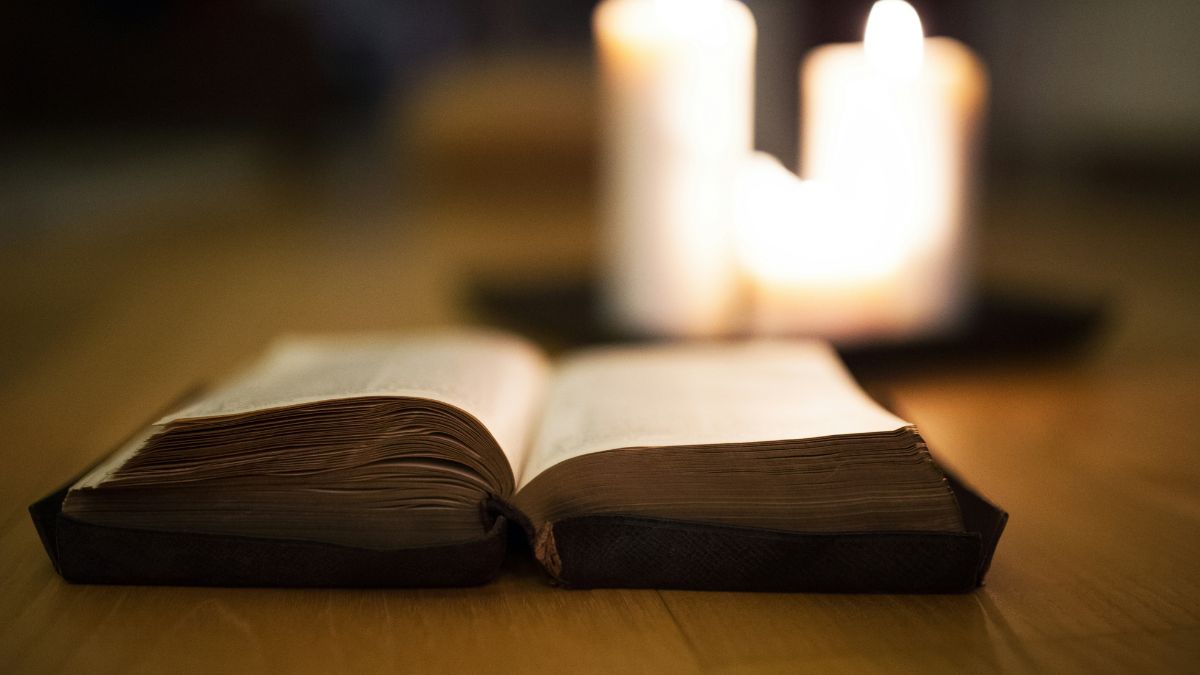

The O Antiphons of Advent
A way to pray and sing with deeper intention this Christmas.
11/29/24
John Stonestreet Glenn Sunshine

Though much of America celebrates today as Black Friday, Christians anticipate this time of year for a very different reason. This Sunday begins the season of Advent, a time set aside in the Christian calendar to reflect on the coming of Jesus into the world.
For many Christians, Advent is thought of as extended Christmas, but it is more than that. In fact, this season is one of the great gifts of the early church. I’ve asked my friend and colleague Dr. Glenn Sunshine to share his thoughts on this important time of year. Here’s Glenn:
When Christmas approaches each year, I find myself connecting to the past, both my family’s and to the more distant history of the Church through the ages. Perhaps this pull toward remembrance is because the theme of Advent (the season of the Church year that begins four Sundays before Christmas) is believers waiting in anticipation of God’s promise to save His storied people. This shared hope of future glory connects us to the history and practices of the Church, who has longed for the Messiah for centuries, starting with the people of Israel in Scripture.
You see, the Church has always been in a posture of waiting and anticipation. In line with this, I’d like to introduce you to the O Antiphons, an Advent practice that goes back at least to the eighth century and possibly to the beginning of the sixth century, or even earlier. An antiphon is a short response recited or sung during a church service after a Psalm or Canticle (a scriptural song not part of the Psalms). The O Antiphons are recited after the Magnificat, or the Song of Mary found in Luke 1, is delivered during the Vespers service, or Evening Prayer, each evening in the week leading up to Christmas. One antiphon is recited each night. They are called the O Antiphons because each begins with “O,” followed by a name for the Messiah drawn from the book of Isaiah and supplemented with other Scriptures.
The O Antiphons are an acrostic. Taking the first letter of each of the names of the Messiah in the antiphons in order, and then read backwards, they form the Latin words ero cras, which means “tomorrow, I will be [there].” Since the last antiphon is recited on Christmas Eve, the acrostic is a clever and subtle way of signaling the end of Advent and the arrival of the One predicted by Isaiah and the other prophets and described in the antiphons.
The O Antiphons are also the basis for the hymn “O Come, O Come, Emanuel.” The hymn was originally composed in Latin and was first published in the Psalteriolum Cantionum Catholicarum. Only five of the seven antiphons were in the first edition; additional verses were added, and by 1878 all seven antiphons were included.
A Latin version of the hymn was translated into English in 1844 by John Mason Neale, but since the final two verses had not yet been written, most versions of the hymn only have four or five verses. Eventually, the two missing verses were translated into English as well. The melody used for the hymn first appeared in the Hymnal Noted in 1851. Thomas Helmore, the compiler of the hymnal, claimed the melody came from “a French missal in the National Library, Lisbon,” but if it did, no one has been able to find it since. This has led many to suspect that Helmore composed it himself in the style of a chant.
“O Come, O Come, Emanuel” has a tremendous amount of meaning to me personally, as it helped me get through the death of my beloved father-in-law just before Christmas 20 years ago. I wrote about that in the article, “Death at Christmas.” I’d encourage you to read that piece, particularly if you are mourning the loss of a loved one this Christmas.
Linked here are the O Antiphons for each day in Latin and English, the corresponding verses of “O Come, O Come, Emanuel” in Latin and English (note that they are in a different order from how typically sung), and some of the Scriptures that the antiphons reference. I would encourage you to join with the Church through the ages in using these in your personal worship on these days.
I recommend reading the Antiphon to understand what it is saying, then spend some time reading and meditating on the scriptural texts. Then pray the Antiphon in light of your reading of the Scriptures and end by singing the verse of the hymn.
Spending time with these Scriptural texts is a powerful way to prepare for Christmas as they offer a more thoughtful appreciation of just Who was born on that night in Bethlehem. And praying the antiphons and singing the hymn helps connect the people of God in all times and in all ages who have prayed and sung these very same words to the honor and glory of their Savior.
Thanks Glenn. Our Strong Women podcast is offering a great way to get the most of out of this advent season. Head on over to the Strong Women podcast web page where you can sign up to get your free reading guide, grab a copy of A Christmas Carol, and join the Strong Women Podcast Community on Facebook to be part of our reading discussions.
Have a Follow-up Question?
Up
Next















